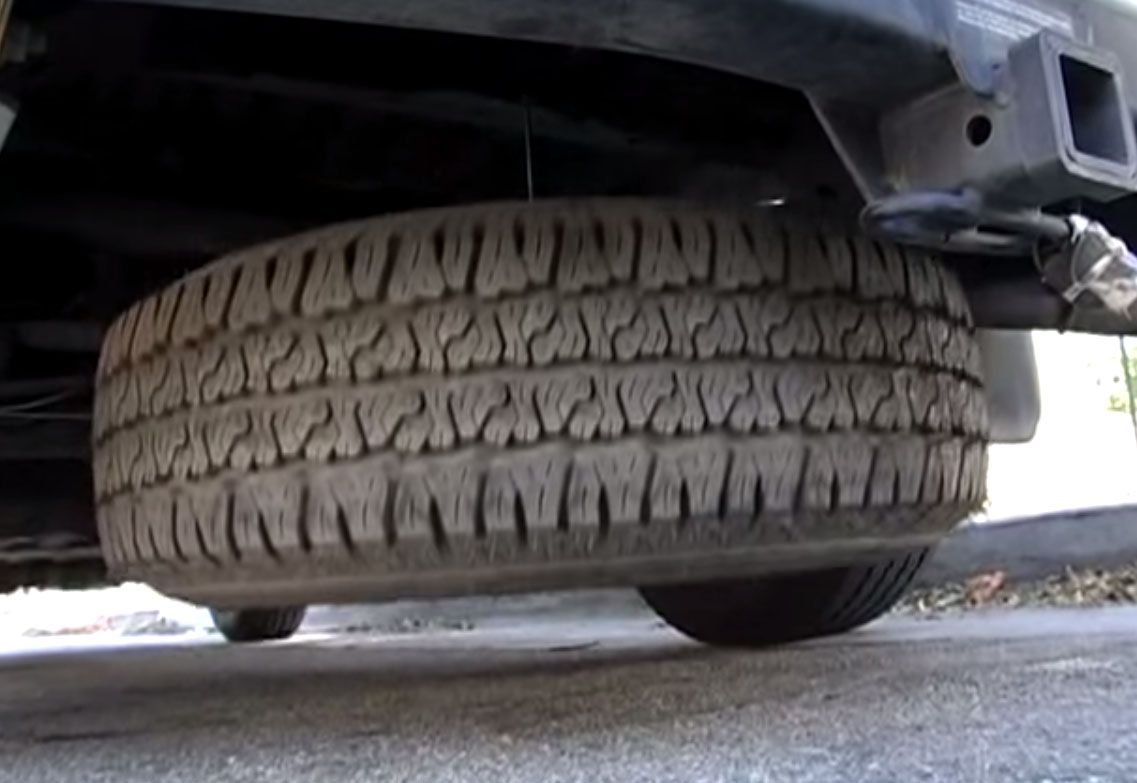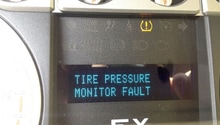Ford F-150/F-250: How to Determine Proper Tire Pressure
Checking the pressure of your tires is easy, affordable, and optimal for your Ford truck's performance. This article takes you through the step-by-step process of keeping your truck connected to the road.
Maintaining correct air pressure in your tires keeps you safe and helps you enjoy the optimum performance of your Ford F-150 or F-250. Under-inflated tires can result in excessive heat build-up (resulting in tire failure), uneven tread wear, sidewall wear and damage, poor gas mileage, and lack of braking and handling performance. Check your tire pressure once a month and before extended drives. Ford F-150’s carry tire pressure monitoring systems. When a “Tire Pressure Sensor Fault” indicator light appears on your instrument panel, check the air pressure in your tires with a well maintained tire gauge.

Materials Needed
- Tire pressure gauge (available free at your local gas station)
Stick-type tire gauges cost between $5 and $10, dial gauges cost from $6 to $50, and the digital cost between $10 and $60. All are easy to use. Pressure is measured in pounds per square inch (psi). Get a gauge with a range of 5 to 99 psi to check the pressure in the temporary spare tire (around 60 psi). Inspecting all your F-150's tires, including the spare, should take fewer than 20 minutes. You will need an air compressor to fill your tires (found at local gas stations). Check the air pressure when the tires are cold for accurate readings.
Step 1 - Read the recommended pressure on your door stickers
Find the recommended tire pressure on the front door latch sticker on the driver’s-side door jamb or in your owner’s manual. Unmodified F-150's tires are recommended to be set at 35 psi when cold. People will also run 40 psi For better fuel economy at the expense of traction. Factory recommended settings are usually a compromise between ride quality, load capacity/handling, and fuel economy. Increasing the pressure will stiffen your ride some as it increases that tire's effective spring rate. You will improve fuel economy and load handling, however.

Pro Tip
Do not use the “max pressure” figure located on the side wall of your tire! Use the one noted on the sticker above. Aftermarket tires will have different recommended pressures.
Step 2 - Remove screw-off cap from valve stem
Twist the screw cap counter-clockwise to remove it from the valve stem.

Step 3 - Press tire pressure gauge onto valve stem
Cover the valve stem with the head of the guage and press in on it. You should hear air escaping. Press tighter until the hissing stops and the gauge pops out the other end. Some gauges must be removed to read the pressure value, but most must be held in place on the valve stem. If the pressure is correct, replace and re-tighten valve cap.
If the tire pressure is too high, release some air by depressing the center stem on the tire valve stem. Do this in small short pushes letting out small amounts of air. Check the pressure after each release to obtain the correct pressure.

Pro Tip
The gas station is often the best place to do this. It is illegal for them do deny you air or water if you've bought gas or diesel that visit. Just walk up to the cashier and ask them to turn the air pump on.
Step 5 - Check spare tire pressure
Don’t forget to check the spare tire pressure. Check the door sticker or the owners’ manual for correct air pressure. Space-saver tires usually have 60 psi. Check the spare using the same method as above.

(Related Article: How to Install a Spare Tire - Ford-Trucks.com )
Pro Tip
It may be time for new tires if they are more than six years old, or if you notice any of the following signs:
- Tread has worn down to less than 3/32"
- Bulges, blisters, or bubbles
- Cracking in the treads
- Punctures or cuts
- Poor handling or traction on slippery surfaces
- Pulling to one side while driving
- Sudden vibration while driving
For more information on Ford Support, go to http://support.ford.com/maintenance/tire-care.
Check your tires regularly, because they are your Ford F-150's connection to the road.
Related Discussions and Sites
- Recommended Tire Pressure - Ford-Trucks.com
- Tire Care and Maintenance - Ford
- Tire Pressure Info - AA1Car.com
- Tire Pressure Monitor System(TPMS) Tool - AdvantageWheelAlignment.com






